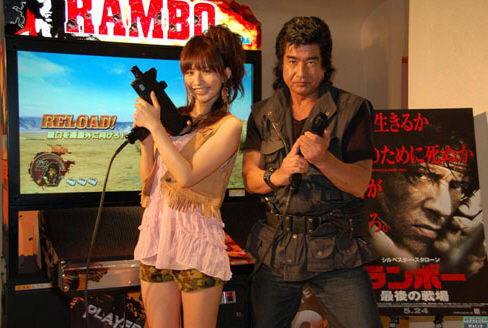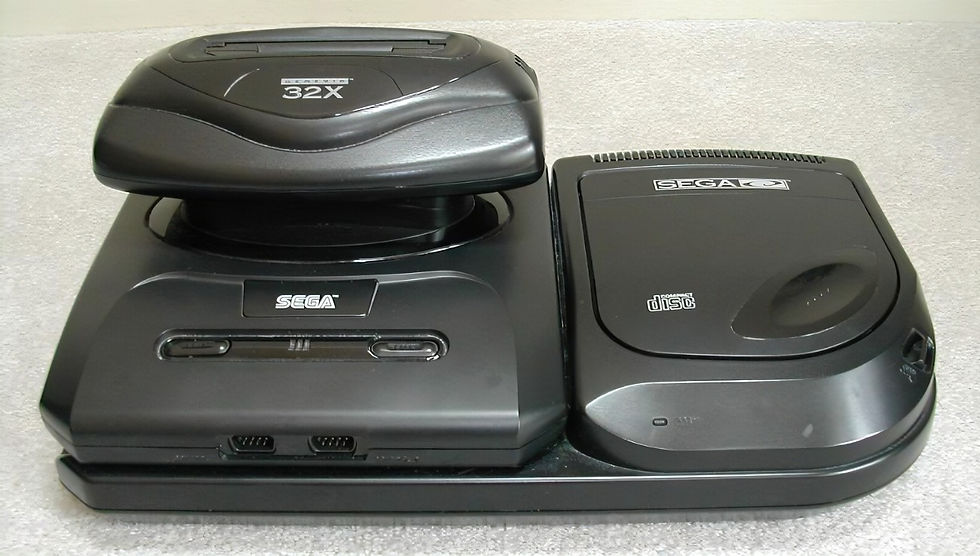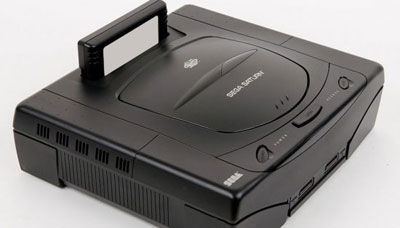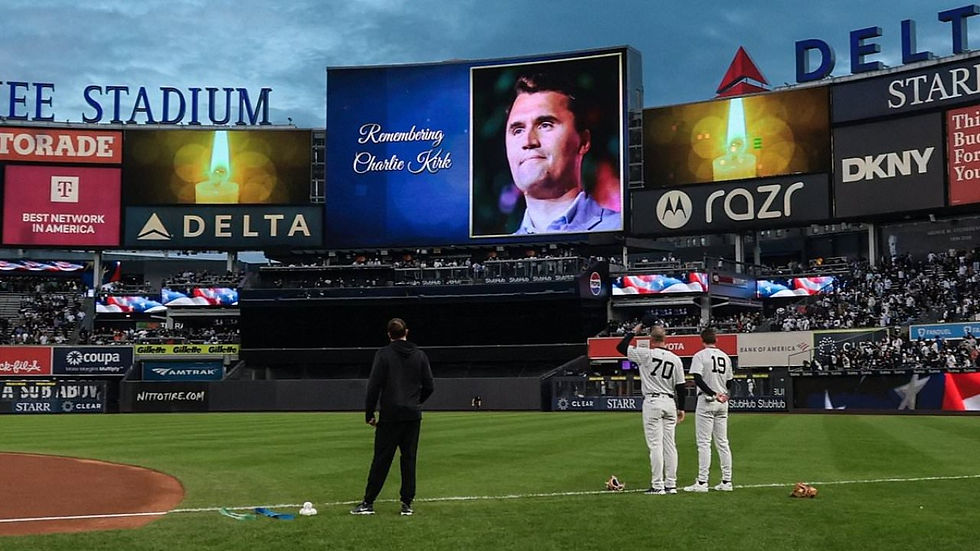Arcade Masters Part II: The Third Dimension
- baronsfel001
- Oct 22, 2022
- 12 min read

Hiroshi Fujioka, known to Sega diehards as the actor who played Saturn-era advertising warrior Segata Sanshiro, returned in form to promote the 2008 arcade adaptation of the second and third Rambo films. A while back saw on this blog listing most prominent and defining Sega arcade games from the 1970s to the end of traditional sprite-based effects in the 90s. As systems launched the 32-bit era and even Super Scaler started growing long in the tooth Sega (particularly Yu Suzuki's AM2 division) already got on top of ensuring theirs would be the company blazing the trails of both gameplay and graphics. Teaming up with America's premier developer of military simulator units yielded Sega dibs at the most sophisticated (and expensive) gaming systems of the day, and while the hardware itself would not quite translate well to home systems the philosophy ran much more parallel with closer home system equivalents which are noted. Among the effects of this is, for the gamer to experience these titles in their arcade form today, arcade games built on parallel hardware can be played on emulators for their sibling home consoles.
1992-1994: Model 1

While never quite matching, upgrades to the System 16-based Sega Genesis brought it to much better parity with era arcade systems culminating with the 32X able to handle Model 1 ports fairly well. Model 1 was Sega's first major contribution to 3D graphics, released the same year as id Software's Wolfenstein 3d. It was not the first such system on the arcade scene and accordingly would not have taken the world by storm were it not for the superb appeal of its unique games. One can be forgiven for considering it prototypical since it was used for experimentation and quickly set aside once it got surpassed. MAME is the most accessible means of enjoying this small library today which is...
Virtua Racing: the first Virtua game ever and like a tech demo of Sega's new 3D pursuits like how Quake and its first two sequels were made as serious games but in hindsight are more technological showcases than fun blockbusters; the Genesis port was likewise a showcase that had to expand the system to get it to run, the 32X port is the most full-featured, and it was among the arcade games remade on Playstation 2 in Sega Classics Collection
Virtua Formula: the best arcade version of Virtua Racing it is expanded with networked multiplayer focus
Virtua Fighter: the launch of the franchise that can be credited with singlehandedly propelling Sega back on top of the arcade scene in the new era, the limitations of the original stand out more today; issues on its Saturn conversion would lead to the superior Remix variant while the 32X port still holds up quite well
Star Wars Arcade: LucasArts games had appeared on Sega consoles before but this was the companies' first arcade collaboration; the 32X port is best-remembered as it offered triple the game content which more than made up for its audiovisual inferiority (but more due to the arcade game getting very limited distribution outside Japan)
Wing War: a classic aircraft dogfighter in full-3D, it never got a home port but is apparently the last to be made for Sega's R360 technology that was most famously associated with the Super Scaler G-LOC
Net Merc: the only game made for a Model 1-based virtual reality setup, now a rare curiosity unavailable for play in any form as of this writing
1993-1998: Model 2

This was not a single board but, like some before and after, Model 2 was a series of different builds with different capacities. While Sega's fortunes floundered at home after no successor (or expansion) to the Genesis proved successful, their arcade fortunes were as strong as ever and it was Model 2 defining that success. MAME has not quite caught up with it so those unwilling to settle for its numerous home ports will have to utilize the dedicated Model 2 emulator (formerly Nebula Model 2). Most of these games are still remembered fondly and include...
Daytona USA: among the best starting showcases for technology there ever could be its first Saturn port was rough (necessitating a later Championship Circuit Edition upgrade) but was better on Windows PC until remade in a 2001 version for Dreamcast then in a downloadable version for 7th generation consoles
Desert Tank: something like a full-3D version of Battlezone it never got a home port and likely never will now because of licensing issues with Martin Marietta
Virtua Cop: an interesting fact is this light gun rail shooter was the primary inspiration for the team which went on to create the monster Nintendo 64 hit GoldenEye 007; in concert with the Stunner peripheral its Saturn port still holds up well today, arguably better than its PC version that only supports mouse aiming (though for the curious that port is one of the few games supporting Nvidia's Saturn-like NV1 card)
Virtua Fighter 2: blew its predecessor out of the water both on arcade and Saturn, that one in the series ported/remade the most (including a curious 2D variant for Sega Genesis)
Rail Chase 2: 3D sequel to the Super Scaler light gun shooter, none of the franchise got home ports but it did inspire an amusement ride distributed in Japan and Australia
Sega Rally Championship: yet another long-running franchise started on Model 2, at this point Windows PCs had advanced to the point that ports to there proved significantly better than the rough (but decent considering) Saturn versions which in this case included DirectX-based force feedback support
Virtua Striker: Sega's first presentation of full-3D soccer (another addition to the list of Model 2 original franchises), the original title would remain arcade-exclusive outside Japan
Indy 500: officially-licensed like Daytona USA but with the Formula focus last seen in Virtua Racing, some were apparently converted Virtua Formula cabinets; unlike Daytona USA this never left arcades
Virtua Cop 2: supersedes the prequel nicely and initially available on the same platforms; its best version in America is found in, of all places, the Dreamcast variant of Sega Smash Pack
Sky Target: though not in name it is essentially the After Burner franchise brought into polygon world; its only home port was to Saturn
Fighting Vipers: distinguished from the Virtua Fighter formula through the addition of destructible body armor; for a while it could only be found at home on Saturn but then it was re-released in downloadable form for 7th generation consoles
Manx TT Superbike: the 3D racing formula now in motorbike form (the Hang-On series had just ended); the Windows PC port is vastly superior to the still-good Saturn
Gunblade NY: exclusive to arcades until re-released for Wii alongside it sibling game L.A. Machineguns, only the 1995 original features the Twin Towers of the World Trade Center
Cyber Troopers Virtual-On: the game for which a Twin Sticks peripheral was created for the Saturn port, perhaps the best way to experience it today is by downloading its 7th console generation re-release
Sonic the Fighters: a.k.a. Sonic Championship, this unique 3D fighting game (a simplified formula which makes it more accessible to the less-hardcore) first came home via Sonic Gems Collection in 2005 but is now best as yet another part of the 7th generation downloadable Model 2 Collection that includes some other games already mentioned
Last Bronx: added weapons to the formula which is something other franchises were experimenting with at the time; in a mirror of Fighting Vipers it is NOT presently available to download but DID get a home port to Windows PC (in addition to Saturn) which remains the best version
Sega Touring Car Championship: not officially part of the Sega Rally series it used a similar format with a different setting; its Saturn port has system clock-sensitive features but the game itself still pales before the Windows PC version
WaveRunner: the racing formula now brought to the realm of watercraft, it and its sequel are arcade-only
Sega Ski Super G: ski racing, with the arcade controls simulating the poles; again, no home ports
The House of the Dead: Sega's own take of horror-themed shooters would go off on a unique tangent; its Saturn port is priced infamously as one of the system's rarest games, so for that reason alone best to get the PC version even if stuck with mouse aiming
Top Skater: subtitled Sega Skateboarding which says all it needs to, this arcade exclusive is considered a spiritual predecessor to the Crazy Taxi franchise
Sega Water Ski: checking yet another unique sport racing box, like its companion games involving skiing and watersports it is arcade-exclusive
Motor Raid: motorbike racing now made futuristic, some units of this arcade exclusive were conversions from Manx TT Superbike
Behind Enemy Lines: [no relation to the film starring Owen Wilson] this arcade-exclusive collaboration with Real3D developed the Virtua Cop idea into something more militaristic and kicked-off a long line of infantry-based machine gun shooters
Dynamite Cop: the second and last Dynamite Deka title (see below) plus the only Model 2 game to have a direct Dreamcast port, the home version included Sega's old game Tranquilizer Gun as a challenge for earning extra lives
1994-1999: Titan Video

The reference should be obvious: Titan is the largest satellite in the solar system as well as possibly the most majestic-looking of the planets, Saturn...which happened to be the name of Sega's primary home console at the time. Indeed, ST-V is the 32-bit equivalent of Sega's previous Systems E & C: architecture near-identical to the home system adapted for arcades which, among other factors, allows near-perfect porting between both. Only this time there is a real format difference, and ST-V games are observed to possess a slight edge over their Saturn counterparts simply because loading data off ROM cartridges is faster than Saturn's 2X CD-ROM drive; but of course, until recently when MAME finally caught up to this hardware Saturn (and Saturn emulators) were the only way to play them at home. The following list is far from exhaustive because most ST-V titles were Japan-exclusive and made minimal impact relative to Sega's Model 2 & 3 games...
Golden Axe The Duel: a fighting game (like that added as a feature to the original's Genesis port) rather than the usual beat-'em-up formula, it looks great but its slightly-inferior Saturn port is considered an inadequate substitute for the failure to bring home The Revenge of Death Adder on System 32
Shanghai Triple Threat: part of a franchise by Activision, although a US rom exists it was apparently only available on Saturn in that region
Baku Baku Animal: the arcade version is Japan-only while console versions were all regions, this is one of the few 32-bit era Sega titles that got a Game Gear port
Virtua Fighter Remix: originally created to address the shortcomings of Virtua Fighter's Saturn port this is better than the original arcade iteration which warranted both a ST-V backport and superior PC version
Super Major League: successor to the Super League games plus the arcade parallel to Sega's successful World Series Baseball home console franchise, a trend that would continue into the NAOMI era
Outlaws of the Lost Dynasty: a fighter by Data East reflecting a trend in which Sega's console-like arcade hardware was more often getting licensed for third party games, its Saturn version is titled Dark Legend
Puzzle & Action Treasure Hunt: the next entry in the series previously found on System C it had a full English release in US arcades but, like its prequels, no direct English home ports
Funky Head Boxers: little is known about this game but a US rom exists (which appears to have never gotten distributed) and has "Sega Sports" branding of at least some sort
Pebble Beach Golf Links The Great Shot: T&E Soft developed a variety of golf games for Sega consoles but this is their sole arcade endeavor which appears unrelated to Pebble Beach Golf Links on Saturn
Virtua Fighter Kids: looks at first glance like a "demake" of Virtua Fighter 2 but actually retains much of the sophistication, playable at home on Saturn and certainly among the series' more interesting takes
DecAthlete: started a brief franchise on both arcade and home Sega systems this is one of those arcade games with a remarkable dose of simulation elements
Die Hard Arcade: first in the Dynamite Deka trilogy (see above) acquiring the famous film license for its Western release, the Saturn port featured Sega's old game Deep Scan as a means of earning extra lives; this game is also notable as the final production of Sega Technical Institute (Kid Chameleon, Sonic 2, Comix Zone, etc.) before folding due to cancellation of Sonic X-treme
Terra Diver: a vertical scrolling shooter by Raizing, it got worldwide arcade distribution but all its home ports stayed in Japan
Columns 97: the jewel puzzle franchise's first 32-bit entry, its only home version is in the Japan-exclusive compilation Columns Arcade Collection
Winter Heat: sequel to DecAthlete now focused on winter Olympian events and licensed accordingly
Cotton 2: the cute-'em-up franchise by Success now makes its 32-bit debut albeit only in Japan (though the rom can be used with a US BIOS, just with loss of the story narrative)
Steep Slope Sliders: was made for Saturn before getting released for Titan in Japan only; despite being made by a third party it was given official Sega Sports branding in the US and all home versions were Saturn-exclusive
Radiant Silvergun: though this Treasure shooter never officially left Japan in its day Saturn fans were fond of how it showcased the system's capabilities...a point mooted by its worldwide enhanced re-release on Xbox Live Arcade
Guardian Force: a Success shooter not-so-cute, while both arcade and Saturn releases were Japan-only this is another Titan rom that happens to be US-compatible
Cotton Boomerang: an enhanced re-release of Cotton 2, once again the Japan-exclusive rom is playable on a US Titan
Final Fight Revenge: part of the Capcom franchise, notable in that this reflects how closely collaborative Sega had become with Capcom by 1999 because the latter was generally known for producing their own arcade boards
1996-1999: Model 3

Sega Saturn includes a cartridge slot which was used to enhance its capabilities in the realm of online gaming in all regions and higher RAM in its home country (not unlike the N64 Expansion Pak), extending its life and impressions without the complex add-on approach that plagued the Genesis. Model 3 has to rank as one of, if not the, most sophisticated and expensive architectures [for its time] in arcade history. The culmination of Sega's partnership with Lockheed Martin, its Real3D graphics set was so far ahead its library would end up with a much greater proportion of arcade exclusives than Model 1 or 2. Emulation is no small feat either: MAME has yet to reach this level and since there is no equivalent home console (to any of Sega's Model boards for that matter) a dedicated emulator is required of which only one with partial support exists. The compatibility of Supermodel however is pretty good and while development is slow there is certainly demand for its refinement in order to enjoy these fondly-remembered hits...
Virtua Fighter 3: the least-ported title of the regular franchise, its Dreamcast release is the later Team Battle variant which nonetheless remains the most accessible to play today
Sega Super GT: spiritual successor to Daytona USA and the first Model 3 showcase game, it never got a direct home version but its tracks were added to the Xbox port of OutRun 2
Virtua Striker 2: the Model 3 version is arcade-exclusive, but it would receive an upgrade to NAOMI that in turn got ported to Dreamcast
The Lost World Jurassic Park: one of those Model 3 exclusives so loved it drives emulation development just to play it, licensing issues make it even less likely to ever see a home version
Sega Super GT Plus: not technically the title as it was Scud Race Plus in its Japan-exclusive distribution, but switching to US region setting will positively identify this as the upgrade to Sega Super GT
Le Mans 24: simulates the actual race via accelerated real-time and has a playable Sonic the Hedgehog (sort of) cameo
Virtua Fighter 3tb: an incremental upgrade marked by introduction of the team mechanic, its Dreamcast port was outsourced and this resulted in not being well-refined for the console (a similar fate bestowed on the first game's Saturn version, only there were no further home updates for this one)
Sega Bass Fishing: the start of a franchise more defined by its Dreamcast port and the fishing controller made for it
Harley Davidson & L.A. Riders: the next licensed motorcycle racer (after Manx TT Superbike) it was made forever arcade exclusive upon cancellation of its Dreamcast port
Ski Champ: successor to Sega Ski Super G, not much else to note as games of this type are much better in arcades than home systems
Sega Rally 2: despite Dreamcast's strengths relative to contemporary PC hardware the Windows port is still superior
Cyber Troopers Virtual-On Oratorio Tangram: the Dreamcast version could be controlled with either that system's own Twin Sticks or the Saturn prequel's (which, minus VMU support, were better) via an adapter, but today it is far simpler to just download the Xbox Live Arcade port which is based on the NAOMI upgrade and latest options set
Fighting Vipers 2: the Dreamcast port never got released in the US, but since it is feature-identical to the arcade original it favors opting to emulate that instead
Daytona USA 2: the initial release is subtitled Battle on the Edge while there was an update called Power Edition, neither ever brought home
The Ocean Hunter: a steampunk-themed underwater shooter featuring lots of classic seafaring legend
SpikeOut: full-3D beat-'em-up in vein of the Streets of Rage sequel that never happened, this franchise got no home version until the Xbox-exclusive Battle Street years later
Star Wars Trilogy Arcade: Sega's second LucasArts arcade collaboration and the best-received, it can be found in some fun centers to this day (such is the impact of the Star Wars license); it never got ported to computer or console despite demand existing for it, but gameplay elements may have been translated into later Rogue Squadron titles
Dirt Devils: dirt track racer kept only in Japan
L.A. Machineguns: subtitled Rage of the Machines, the second vehicle-based machine gun rail shooter (after Gunblade NY) which got a curious port to Wii over a decade later
Emergency Call Ambulance: the first of the Sega Professional series so-called because they mirror real-life occupations, sometimes (as in this case) so well that they prove a considerable challenge to play
Magical Truck Adventure: rail adventure (not rail shooter) with unique controls and a kid-friendly theme
This here is another good stopping point. The System era of the 1980s was a time Sega was still finding itself on both the home console and arcade fronts. The 90s proved a time of transition: Sega would try to preempt the competition with hardware innovations only in the end to learn their best assets were in the games themselves. It would take until the failure of Dreamcast to confirm they would be better not restricted to the market share of their own custom architecture, but in arcades this innovation (through their prominent US defense contractor partnerships) launched a new golden age: the Model era.
In 1998 there came a new era. Dreamcast launched the 6th console generation and creative games first on this platform included all the franchises that would initially define Sega as a mutli-console developer; NAOMI, the arcade series based originally on the same architecture as Dreamcast, survived much longer in its successive forms such as Hikaru and Atomiswave (the latter of which also doubled as successor to SNK's famed Neo Geo MVS). The NAOMI era would be defined by abandonment of custom dedicated arcade builds in favor of basis on home consoles, including Triforce (Nintendo Gamecube) and Chihiro (Microsoft Xbox), and would close with Sega Lindbergh marking transition to the present era in which arcade systems are based on Intel PC architecture.





Comments